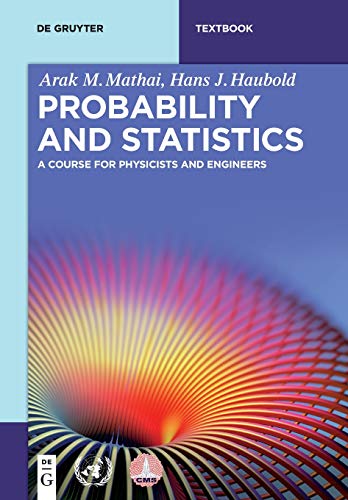
Probability and Statistics: A Course for Physicists and Engineers
by Arak M. Mathai, Hans J. Haubold
Publisher: De Gruyter Open 2017
ISBN-13: 9783110562545
Number of pages: 582
Description:
This book offers an introduction to concepts of probability theory, probability distributions relevant in the applied sciences, as well as basics of sampling distributions, estimation and hypothesis testing. As a companion for classes for engineers and scientists, the book also covers applied topics such as model building and experiment design.
Download or read it online for free here:
Download link
(multiple formats)
Similar books
 Introduction to Probability, Statistics, and Random Processes
Introduction to Probability, Statistics, and Random Processesby Hossein Pishro-Nik - Kappa Research, LLC
This book introduces students to probability, statistics, and stochastic processes. It can be used by both students and practitioners in engineering, sciences, finance, and other fields. It provides a clear and intuitive approach to these topics.
(23155 views)
 Advanced Data Analysis from an Elementary Point of View
Advanced Data Analysis from an Elementary Point of Viewby Cosma Rohilla Shalizi - Cambridge University Press
This is a draft textbook on data analysis methods, intended for a one-semester course for advance undergraduate students who have already taken classes in probability, mathematical statistics, and linear regression. It began as the lecture notes.
(11305 views)
 Lectures on Probability, Statistics and Econometrics
Lectures on Probability, Statistics and Econometricsby Marco Taboga - statlect.com
This e-book is organized as a website that provides access to a series of lectures on fundamentals of probability, statistics and econometrics, as well as to a number of exercises on the same topics. The level is intermediate.
(15142 views)
 An Introduction to Stochastic PDEs
An Introduction to Stochastic PDEsby Martin Hairer - arXiv
This text is an attempt to give a reasonably self-contained presentation of the basic theory of stochastic partial differential equations, taking for granted basic measure theory, functional analysis and probability theory, but nothing else.
(14294 views)